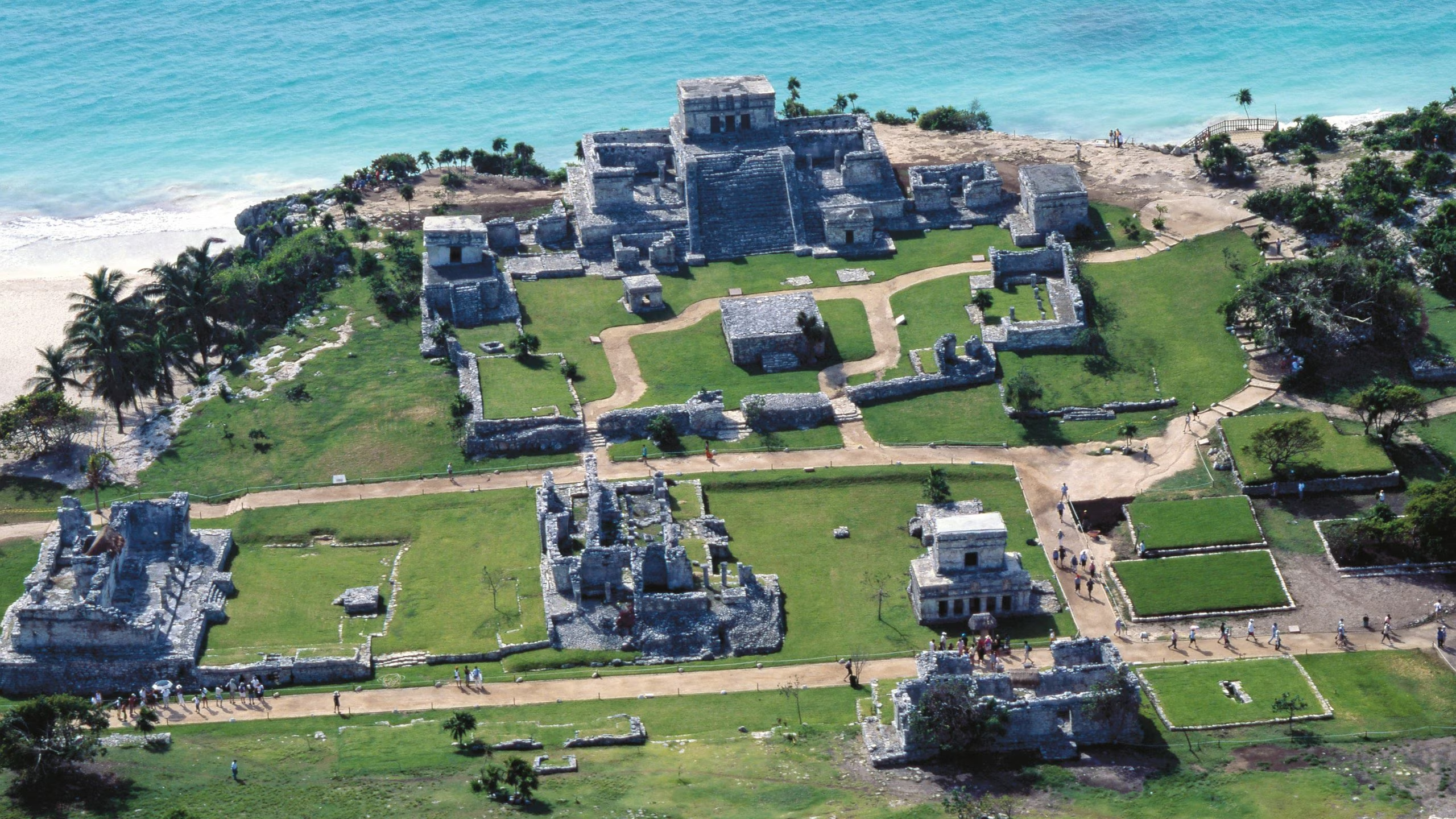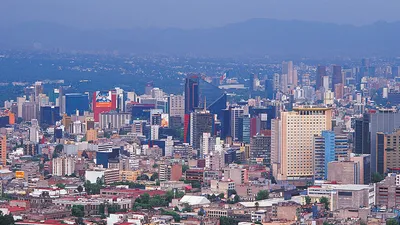Mexico - 1987
- Usha Shah
- Apr 2, 2022
- 5 min read
Updated: Mar 18
JOURNEY FROM EAST TO WEST
We were in USA to attend Paediatric Cardiology meeting in New York. The main attraction was that most famous Paediatric Cardiologist and our teacher at Johns Hopkins Hospital was going to be there and my husband would meet his many colleagues from all over world over there. Following this conference we were going to San Diego to attend ECHO meeting.
We started in Cancun and went across visiting Meridia , Mexico City , Acapulco and from there fly to San Diego.
From ancient culture - Maya and Aztec to luxurious seaside resorts.
Here starts our journey.
From New York we flew to Cancun, a modern famous resort. We had not made any prior booking.
Not knowing Spanish language was also a problem. We went to the hotel booking counter at the airport to book a hotel for 3 days. And we had a unique experience . He suggested that the lady Mrs. Beta Perez who was standing at the counter has a very nice accommodation. So we decided to go there. She quickly rang up her husband who came to pick us up. On reaching we liked the hotel and he gave us a room to rest while our room is getting ready and said I will take you there when it is ready. After about 2 hours he took us to our room - lo and behold - it was a beautiful spacious suite. It was a luxurious two bedroom suite. It overlooked the big swimming pool. Actually it had 2 bedrooms and I wished my daughter was with us. It also had a mini kitchen. It was facing the swimming pool with people were having fun. Mostly youngsters.
Of course we also enjoyed swimming in the pool. At dinner time we realised there were very few seniors. So we three senior couples used to seat to gather for dinner.

Cancun is located in Yucatan Peninsula. Our main interest was to see ancient cultural monuments.
Tulum is a stunning coastal town located on the Yucatán Peninsula . It is located in the Mexican state of Quintana Roo. Known for its well-preserved ancient Mayan ruins, pristine beaches, and eco-friendly vibe, Tulum is a favourite destination for those seeking a blend of history, nature, and relaxation.
We made a day visit to Tulum which is located further down south along the coast. The most iconic attraction in Tulum, these ancient Mayan ruins are perched on a cliff overlooking the Caribbean Sea..Mayan ruins tower over the sea in Tulum. The formerly walled city was one of the last to be built by the Mayans, and its archaeological sites are incredibly well preserved. Tulum is a resort town on Mexico’s Caribbean coast, around 130 km south of Cancún. According to archaeological findings at the Tulum Ruins, the site began to be inhabited as early as 564 A.D. Over a period of 7 centuries, rulers came and went. The city we know as Tulum was transformed by each new generation of inhabitants and their respective styles and influences.It was one of the few enclosed cities with walls on three sides and the Caribbean Sea on the other. The 13th-century, walled Mayan archaeological site at Tulum National Park overlooks the sea. It incorporates the clifftop Castillo, built as a watchtower, and the Templo de las Pinturas, with a partially restored mural, the Temple of the Frescoes. Inland, the Cobá archaeological site has pyramid-shaped temples with views over the surrounding jungle.
Like other Mayan ruins of the Yucatan Peninsula, many of the buildings fuse different architectural styles depending on the epoch in which they were built or expanded upon. Tulum means walls in Maya. However, the town’s original name, Zamá (pronounced zam-MAH) translates as “Place of the dawning sun.”.

Across from Tulum is an island in Carrebian sea “ Cozumel ”. The large island across from Tulum is Cozumel, one of Mexico's premier tourist destinations, known for its vibrant marine life, crystal-clear waters, and relaxed atmosphere. Here’s a guide to what Cozumel offers:
The island south of Cancun in Mexico is called Cozumel. Cozumel is a popular tourist destination known for its beautiful beaches, coral reefs, and water activities. It is the largest island in the Mexican Caribbean and is located in the Caribbean Sea off the eastern coast of the Yucatán Peninsula.
This is quieter place than Cancun but offers lots of water sports.

Merida is an ancient town with Spanish architecture. This town has a unique feel of Spain. Interesting places to visit from here are Chichen Itza and Uxmal.
Uxmal is another significant archaeological site in the Yucatán Peninsula, known for its well-preserved Maya ruins. It is located in the Puuc region, southwest of the city of Mérida. Uxmal was a major city during the Mayan civilization's heyday, and its structures showcase the Puuc architectural style, characterized by intricate geometric patterns and ornate facades. Yucatán Peninsula, Mexico, about 60 miles south of Mérida.
Historical Significance: Uxmal was an important city of the Puuc region, flourishing between 600 and 1000 AD. It is also a UNESCO World Heritage Site.
Key Structures:
Pyramid of the Magician: The tallest structure at Uxmal, it is unique for its rounded sides and steep slopes.
Nunnery Quadrangle: A large courtyard surrounded by four impressive palaces, noted for their intricate stone carvings.
Governor's Palace: A long, low building with a richly decorated façade, considered one of the finest examples of Puuc architecture.
House of the Turtles: Named for the turtle carvings that adorn the cornice of the building.
As for Coba, it is yet another impressive Mayan archaeological site, situated in the northeastern part of the Yucatán Peninsula. Coba is known for its extensive network of ancient roads (sacbes), large pyramids, and the Nohoch Mul pyramid, which is one of the tallest in the Yucatán. Coba offers a unique experience as visitors can still climb the Nohoch Mul pyramid, providing panoramic views of the surrounding jungle.
Both Uxmal and Coba provide valuable insights into the history, architecture, and culture of the ancient Maya civilization, making them worthwhile destinations for those interested in exploring archaeological sites in the Yucatán Peninsula.
Chichen Itza
Location: Yucatán Peninsula, Mexico
Historical Significance: Chichen Itza is one of the most famous Mayan ruins and a UNESCO World Heritage Site. It was a major regional center from the Late Classic to the early Postclassic periods (circa 600 to 1200 AD).
Key Structures:
El Castillo (Temple of Kukulkan): This pyramid is the most iconic structure at Chichen Itza. During the equinoxes, the shadow cast by the sun on the pyramid creates the illusion of a serpent slithering down the steps.
Great Ball Court: The largest ball court in Mesoamerica, where the Maya played the Mesoamerican ballgame.
Temple of the Warriors: A complex with hundreds of columns depicting warriors.
Cenote Sagrado: A large sinkhole that was used for religious sacrifices.
These sites offer a glimpse into the fascinating history and architecture of the ancient Mayan civilization.
Spanish conquistadors founded Mexico City in 1521 atop the razed island-capital of Tenochtitlán, the cultural and political centre of the Aztec (Mexica) empire. It is one of the oldest continuously inhabited urban settlements in the Western Hemisphere, and it is ranked as one of the world’s most populous metropolitan areas. One of the few major cities not located along the banks of a river, it lies in an inland basin called the Valley of Mexico, or Mesa Central. The valley is an extension of the southern Mexican Plateau and is also known as Anáhuac (Nahuatl: “Close to the Water”) because the area once contained several large lakes. The name México is derived from Nahuatl, the language of its precolonial inhabitants.











Comentarios